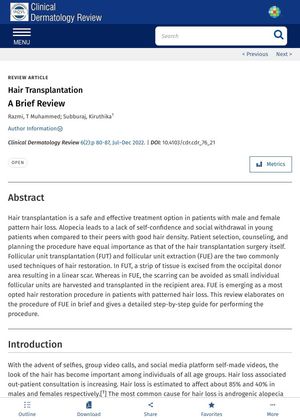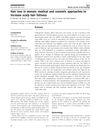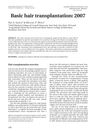Hair Transplantation: A Brief Review
July 2022
in “
Clinical dermatology review
”

TLDR Hair transplantation is an effective hair loss treatment with two main techniques, requires careful planning, and can improve beard and eyebrows appearance.
Hair transplantation, a popular solution for hair loss, particularly androgenic alopecia, involves transferring hair grafts from a donor area to the balding area. The planning stage is crucial, considering factors like patient's age, medical history, family history of alopecia, and hair characteristics. The number of grafts used significantly affects the outcome and cost. The document recommends a waiting period of 3-6 months after recovering from COVID-19 before undergoing the procedure. Two main techniques are used: Follicular Unit Transplantation (FUT) and Follicular Unit Extraction (FUE). FUT provides denser packing and better cosmetic results but is more time-consuming and expensive, while FUE reduces the "out-of-body time" for the grafts, potentially improving graft survival. Postoperative care includes medications, head bandages, and regular application of NS wash for graft nourishment. Initial hair growth can be noted by 6 months, with a satisfactory outcome seen by 9 months. Postoperative treatments like Minoxidil, Platelet-Rich Plasma, and Low-Level Light Therapy can enhance wound healing and hair growth. Complications can include postoperative pain, facial edema, scalp folliculitis, and temporary paraesthesia of the scalp. Hair transplantation can also be used for aesthetic enhancement of the beard and eyebrows.




